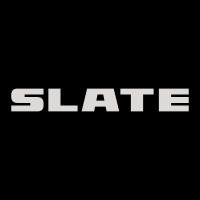
EHSS Senior Engineer, Industrial Ergonomics
Applicants must be authorized to work for any employer in the U.S. We are unable to financially sponsor or take over sponsorship of an employment Visa for this opportunity currently.
About Slate
At Slate, we’re building safe, reliable vehicles that people can afford, personalize and love — and doing it here in the USA as part of our commitment to reindustrialization. The spirit of DIY and customization runs throughout every element of a Slate, because people should have control over how their trucks look, feel, and represent them.
Who we are looking for:
The EHSS Senior Engineer, Industrial Ergonomics is responsible for leading the development, implementation, and continuous improvement of ergonomic strategies and programs across Slate’s operations. This role serves as the subject matter expert (SME) in industrial ergonomics, ensuring that equipment and workstation designs meet both industry and internal ergonomic standards. The position plays a critical role in reducing musculoskeletal disorder (MSD) risks, enhancing employee well-being, and supporting engineering teams with design feedback that drives long-term risk reduction.
What you get to do:
- Ergonomic Design Evaluation: Assess equipment and workstation designs to ensure alignment with ergonomic best practices, biomechanical principles, and internal technical specifications.
- Standards Development: Lead the creation and maintenance of internal ergonomic design standards and technical specifications, incorporating the latest research and industry benchmarks.
- Program Oversight: Serve as the SME for ergonomic programs across manufacturing and corporate operations, ensuring consistent implementation and performance monitoring.
- Data Monitoring & Analysis: Track and analyze leading and lagging indicators related to ergonomic risk and injury trends. Use data to inform strategy and prioritize interventions.
- Intervention Programs: Develop and oversee ergonomic intervention programs, including symptom intervention, job placement, work conditioning, and early reporting initiatives.
- Engineering Feedback Loop: Facilitate structured feedback from operations to engineering teams to influence vehicle and equipment design improvements that reduce ergonomic risks.
- Training & Awareness: Deliver training and coaching to cross-functional teams on ergonomic principles, risk identification, and control strategies.
- Cross-Functional Collaboration: Partner with engineering, operations, health services, and HR to integrate ergonomics into product and process design.
- Strategic Leadership: Lead the enterprise-wide ergonomics strategy, ensuring alignment with EHSS goals and continuous improvement in employee safety and comfort.
What you bring to the team:
- Education: Bachelor’s degree in Industrial Engineering, Biomechanics, Ergonomics, Occupational Health, or a related field. Advanced degree is preferred.
- Experience: 8+ years of experience in industrial ergonomics, preferably within the automotive or manufacturing sector.
- Certifications: Professional certifications are preferred (e.g., CPE, AEP, etc.).
- Deep understanding of ergonomic risk factors, assessment tools, and control strategies.
- Experience developing ergonomic standards and technical specifications.
- Strong analytical skills with the ability to interpret ergonomic data and trends.
- Excellent communication and collaboration skills across technical and non-technical teams.
- Proficiency in ergonomic assessment software and tools (e.g., REBA, RULA, 3D modeling, etc.).
- Proficiency with Microsoft Office (Outlook, Teams, Word, Excel, PowerPoint).
Working Conditions and Environment:
- This position is a combination of office and manufacturing floor environments. Regular engagement with design, engineering, and production teams is required.
- Must have the ability to travel, both domestic and international (up to 40%).
Physical Requirements:
- Must have the ability to lift up to 35 pounds.
- Must have the ability to stand, walk, and perform repetitive tasks for extended periods.
- Must have the ability to conduct ergonomic assessments in production environments, which may involve physical observation, measurement, and interaction with equipment.
Why Join Team Slate?
We’re fueled by grit, determination, and attention to detail. Slate’s start-up spirit of ingenuity and resourcefulness moves our business forward. Team Slate fosters a culture of excellence, innovation, and mutual respect, and is motivated by shared principles.
- Safety First
- Delight Customers
- One Team
- Relentless Improvement
- Fast, Frugal, and Scrappy
- Respectful Collaboration
- Positive Legacy
We want to work with people that reflect the communities in which we operate.
- Slate is proud to be an Equal Employment Opportunity and Affirmative Action employer. We do not discriminate based upon race, color, religion, gender, gender identity or expression, sexual orientation, national origin, genetics, disability, age, veteran status, marital status, parental status, cultural background, organizational level, work styles, tenure and life experiences. Or for any other reason.
- Slate is committed to providing reasonable accommodation for qualified individuals with disabilities in our job application procedures. If you need assistance or an accommodation due to a disability, you may contact us at recar-talent_acquisition@slate.auto.
Apply for this job
*
indicates a required field